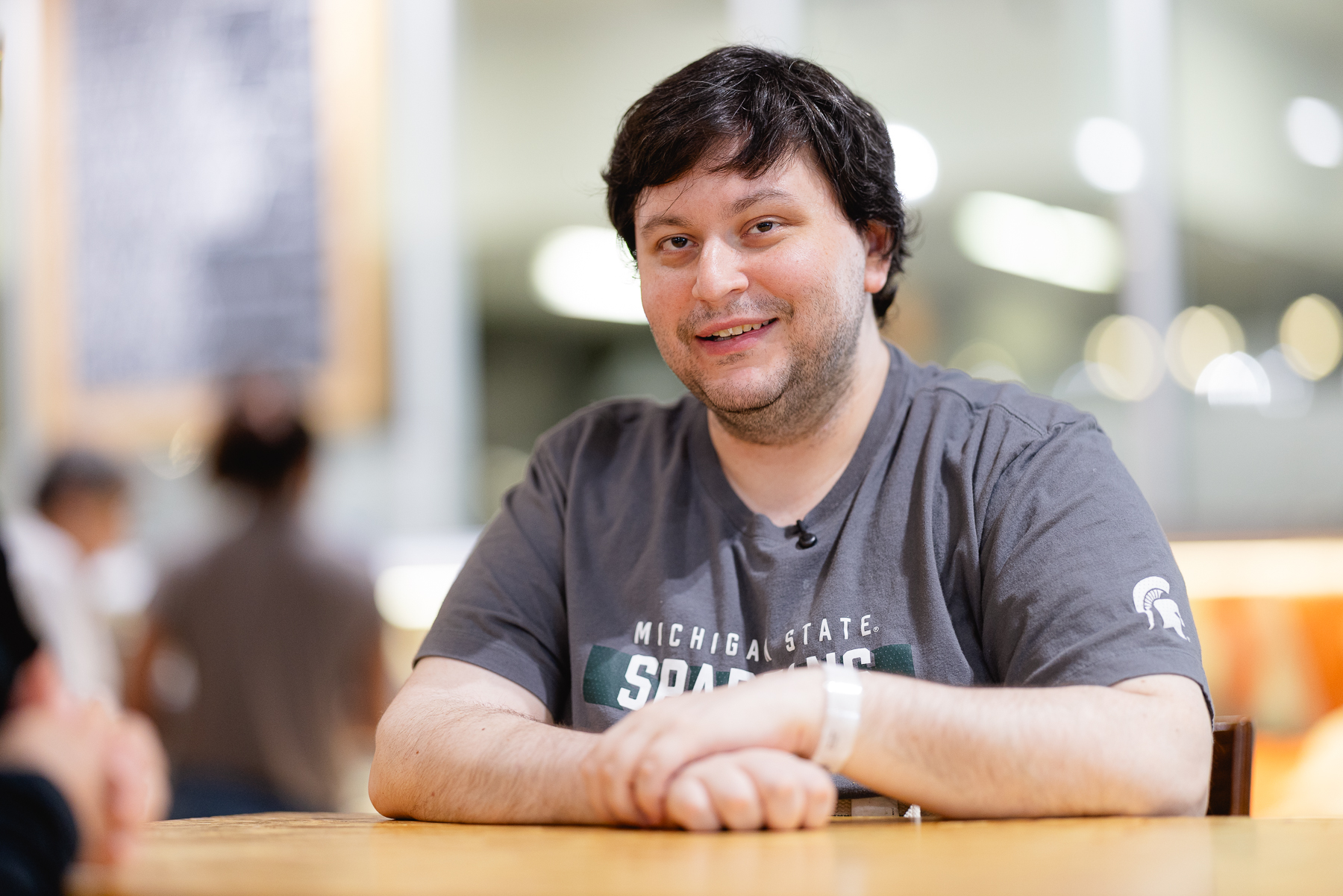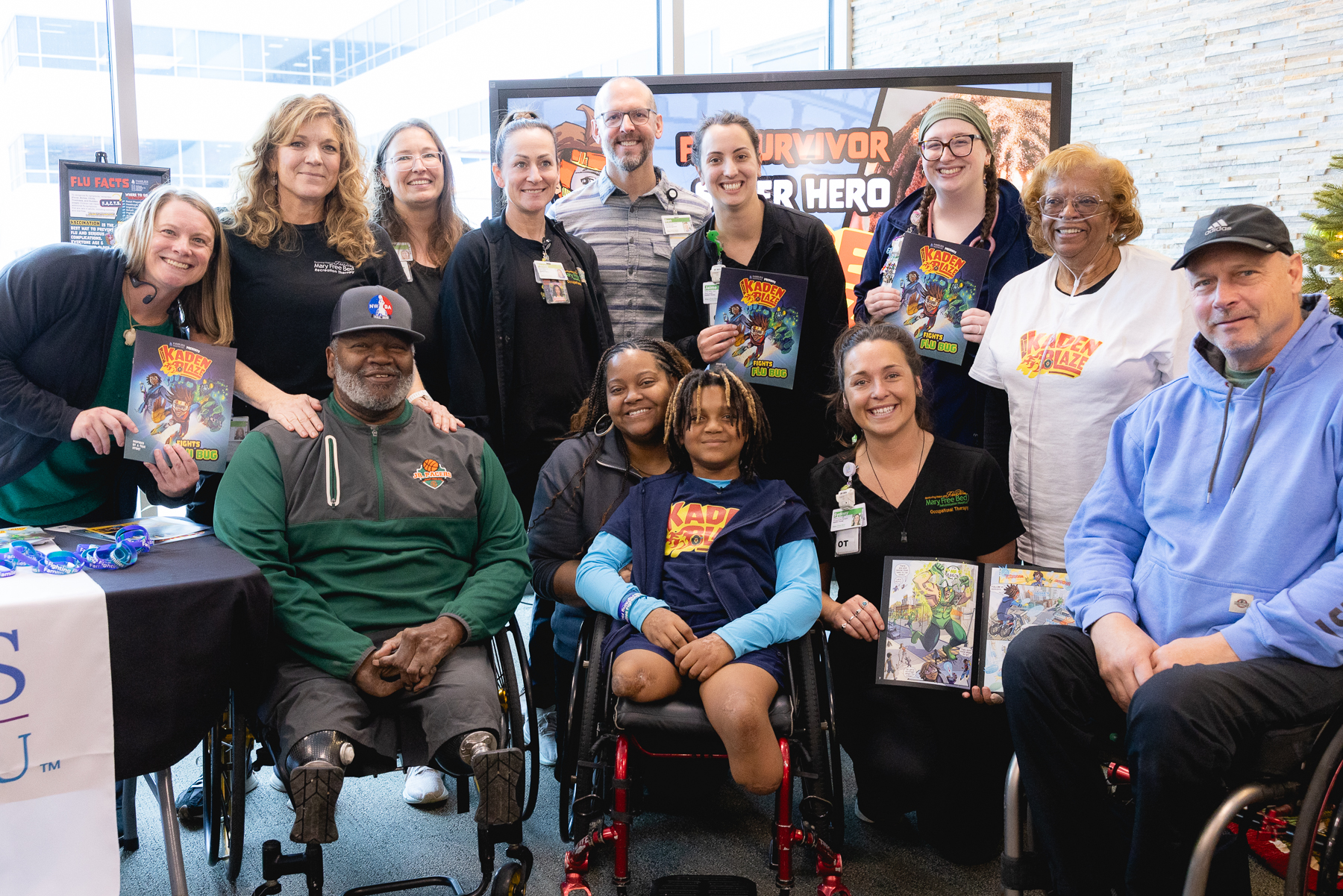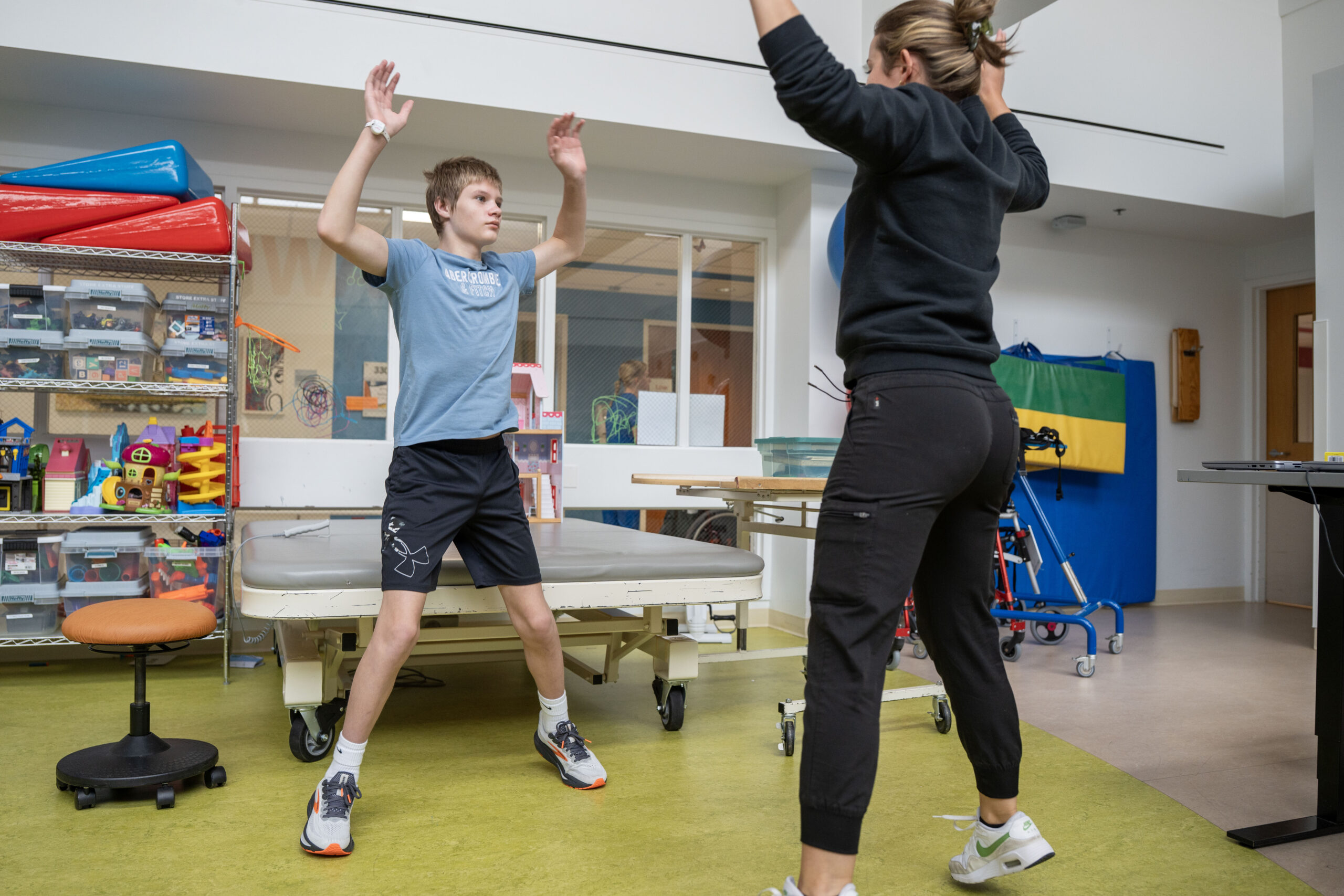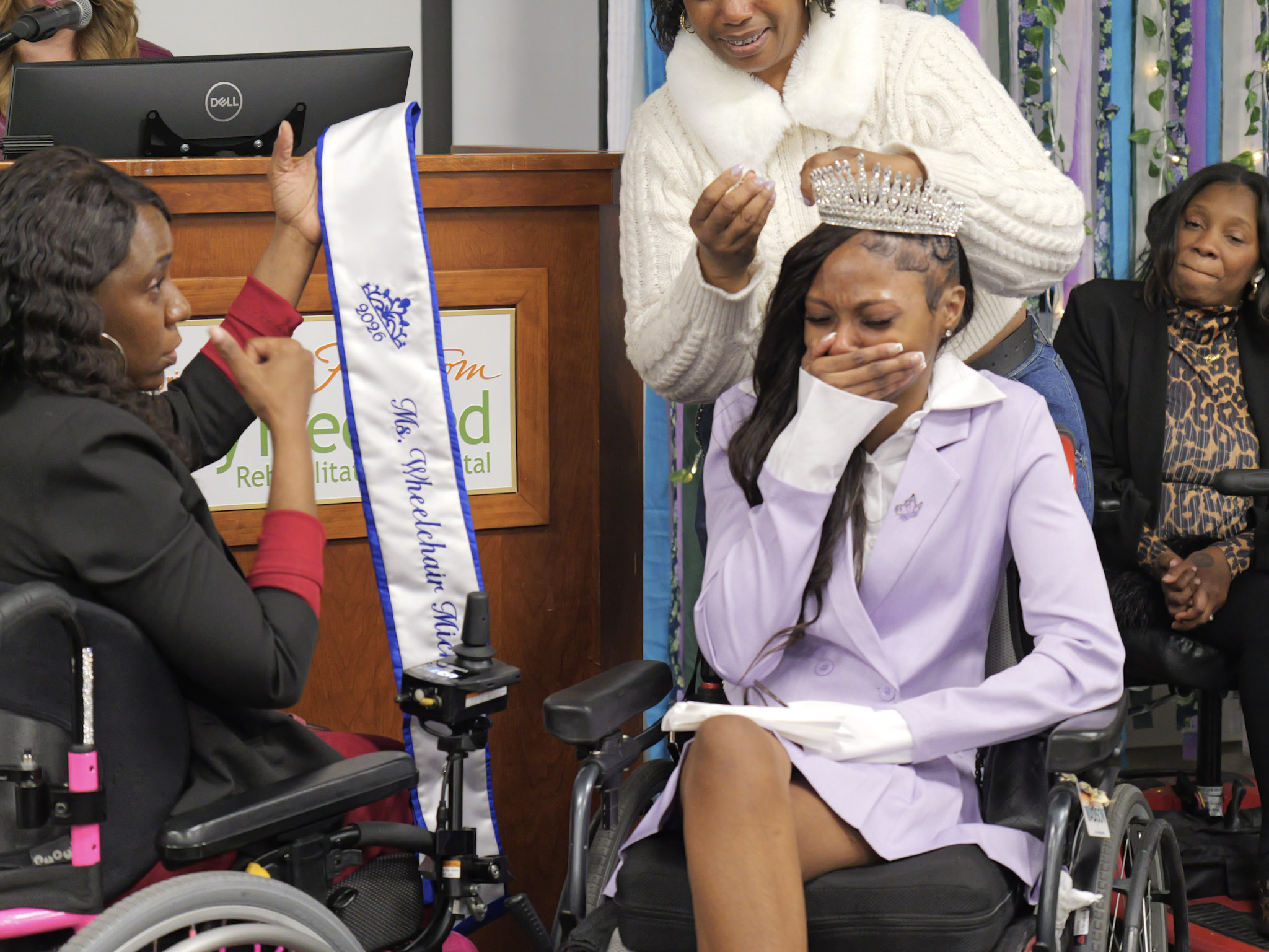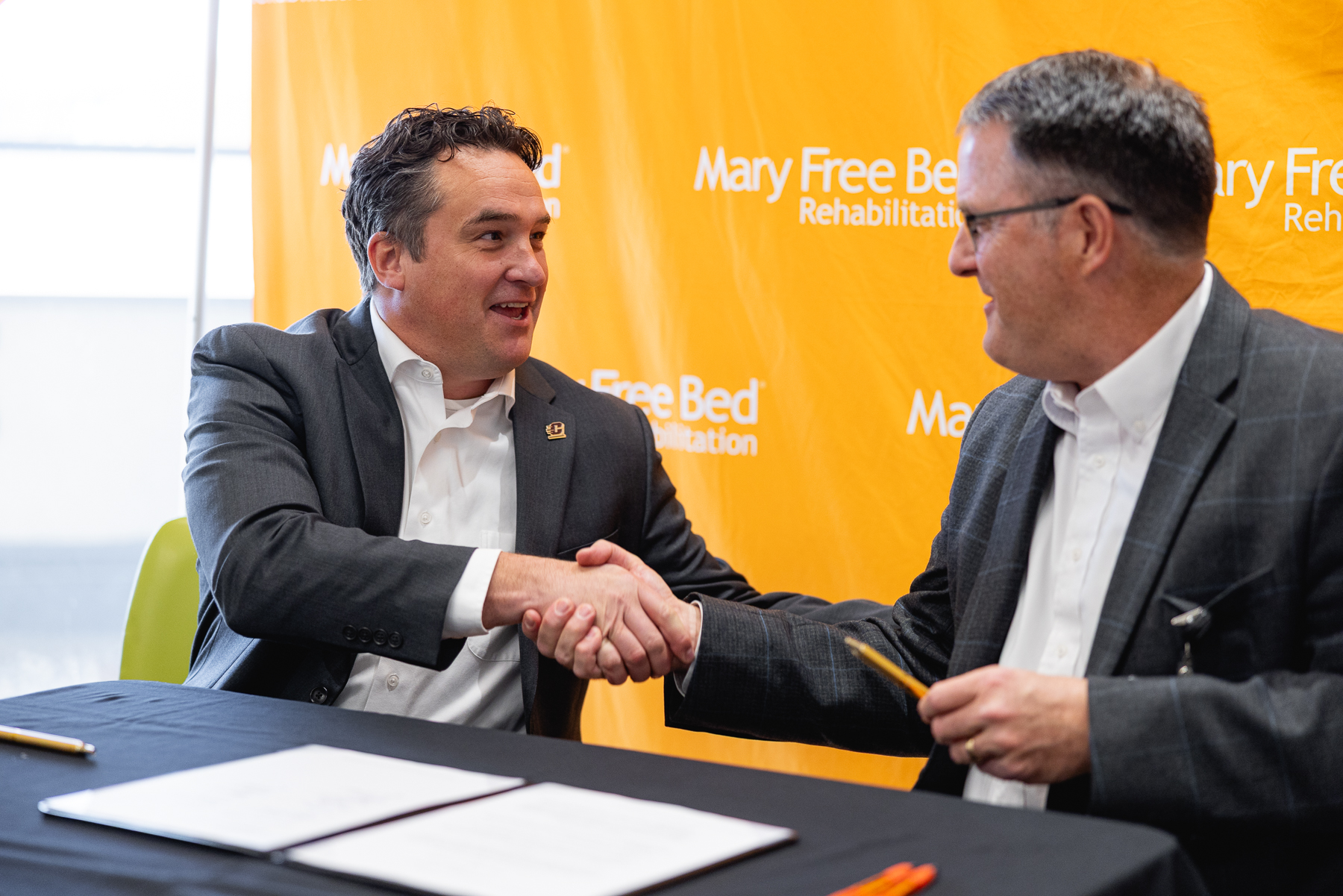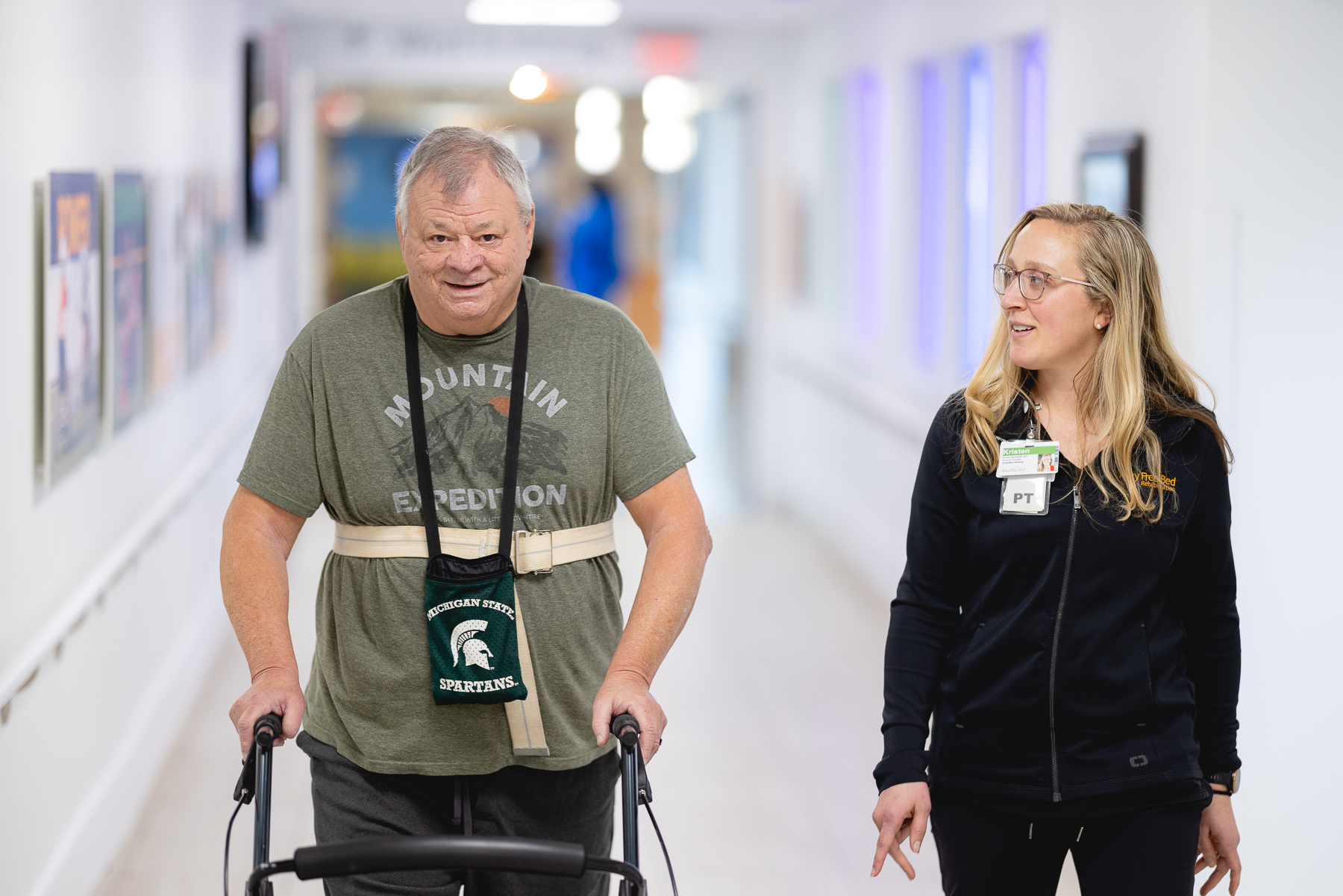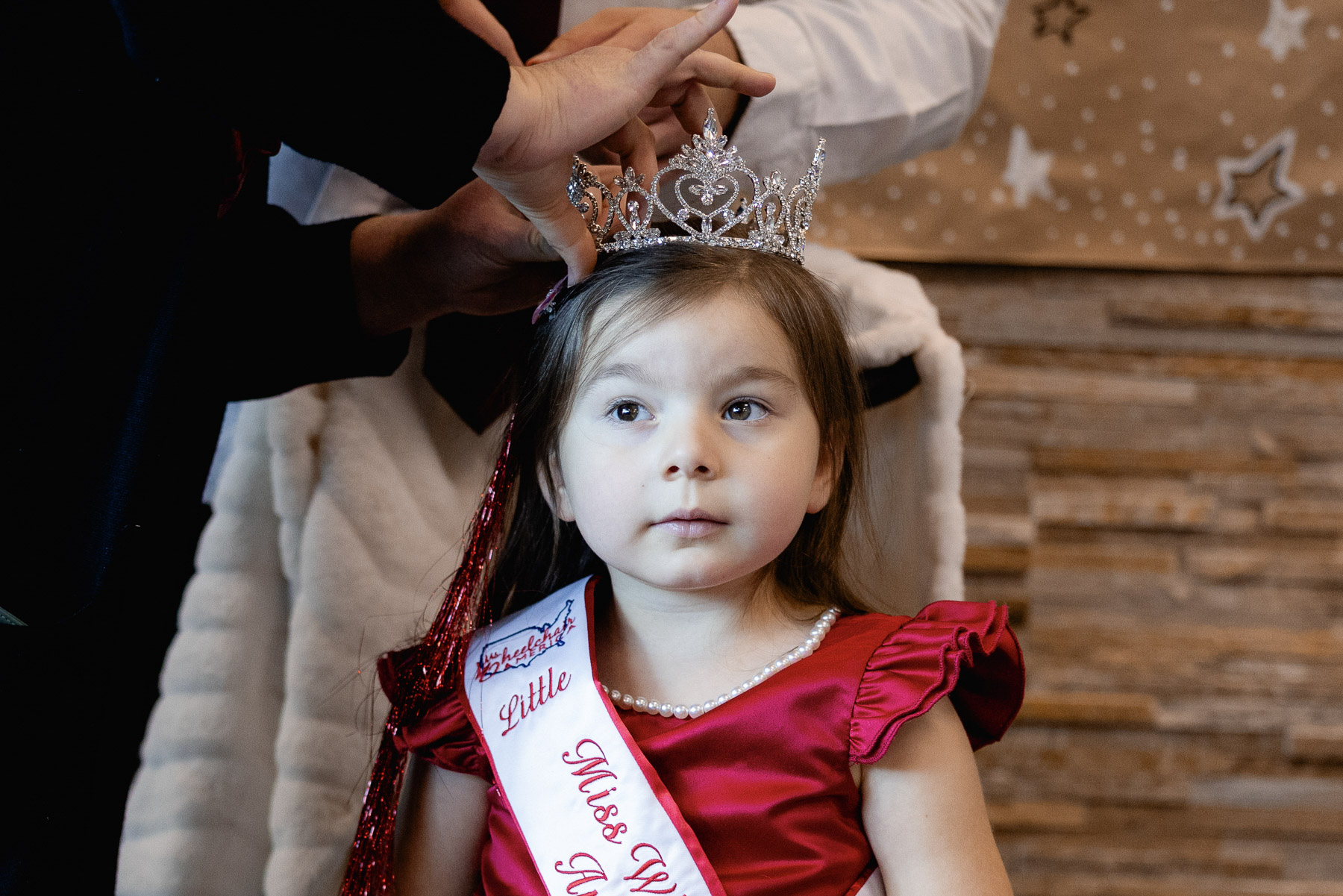Bruce Najor, 39, prefers crisp communication. During his tenure as a speech and debate coach at Michigan State University, Bruce has continuously championed language and the written word. Following a stroke, Bruce spent 38 days at Adult Inpatient Stroke Rehabilitation Program at Mary Free Bed Rehabilitation Hospital in Grand Rapids, Michigan. During his stroke rehabilitation journey, the Metro Detroit-based academic found an unexpected creative outlet.
Numb Out of Nowhere
While driving to a routine appointment last April, Bruce noticed a sudden numbness. His left hand wouldn’t stay on the steering wheel. He could feel himself beginning to drift. “I thought, ‘This is weird, but it could just be an oddity. It’ll go away after a couple minutes. But then, instead of getting better, my foot went,” Bruce recalled.
He remembers his foot feeling like “a rock on the pedal.” That’s when he pulled over. He made sure to call an ambulance, and his dad Vincent. He was transferred to Henry Ford Hospital in Detroit.
Bruce stayed at Henry Ford Hospital for two weeks. A family friend told Bruce and Vincent about their mom’s recent stay at the Mary Free Bed Adult Inpatient Stroke Rehabilitation Program, and it convinced Bruce to Ask For Mary. He was transferred to Mary Free Bed in Grand Rapids for inpatient stroke rehabilitation on April 23.
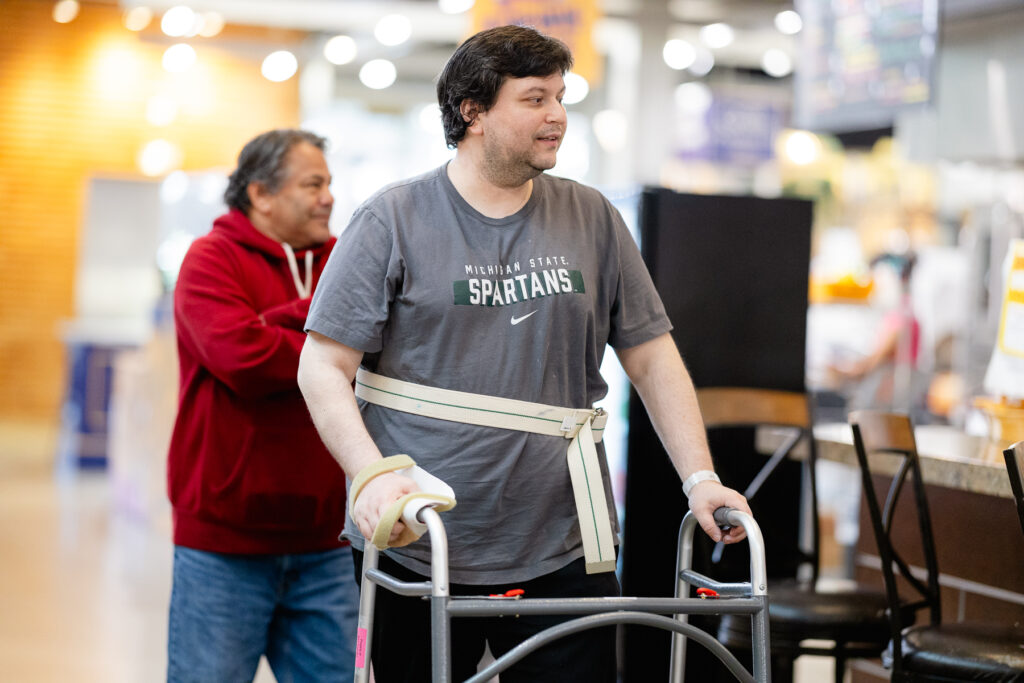
A Therapeutic Trifecta
Bruce and his dad worked alongside a dedicated team of therapists throughout his recovery process including a speech therapist, a physical therapist and an art therapist. Together, Bruce and his therapy team worked in tandem to tailor his recovery to his fast-paced career, taking a whole-person approach to healing.
Since Bruce’s stroke mainly impacts his right side, he received a custom ankle foot orthosis (AFO) to help stabilize his right ankle. In physical therapy, Bruce worked on improving his coordination and balance. He noticed a significant improvement in his right leg during his time at Mary Free Bed, calling it his “greatest improvement.”
But throughout his time in inpatient rehabilitation, Bruce also learned to appreciate small milestones. “One day, I woke up and my thumb had moved, and so that was a big deal for me,” Bruce said.
Coaching the Coach
When Mary Free Bed speech therapist Danielle Vander Horst heard that her newest patient was a speech and debate coach, she was a little intimidated.
Bruce coaches and judges speech and debate at Michigan State University. The world of speech and debate is not only highly competitive, it’s fast-paced. Danielle wanted their therapy sessions to mirror Bruce’s work environment.
During one speech therapy session, Danielle asked Bruce to teach her how to play a card game. Not only did this help with Bruce’s planning, reasoning and memory skills after a stroke, it gave him a chance to reacquaint himself with teaching.
“I’m a teacher, and being able to teach a game was important to the rehabilitation process. So, it really captured that, I thought,” Bruce said.
Bruce is working part time this fall, mentoring students and writing about this season’s debate topics.
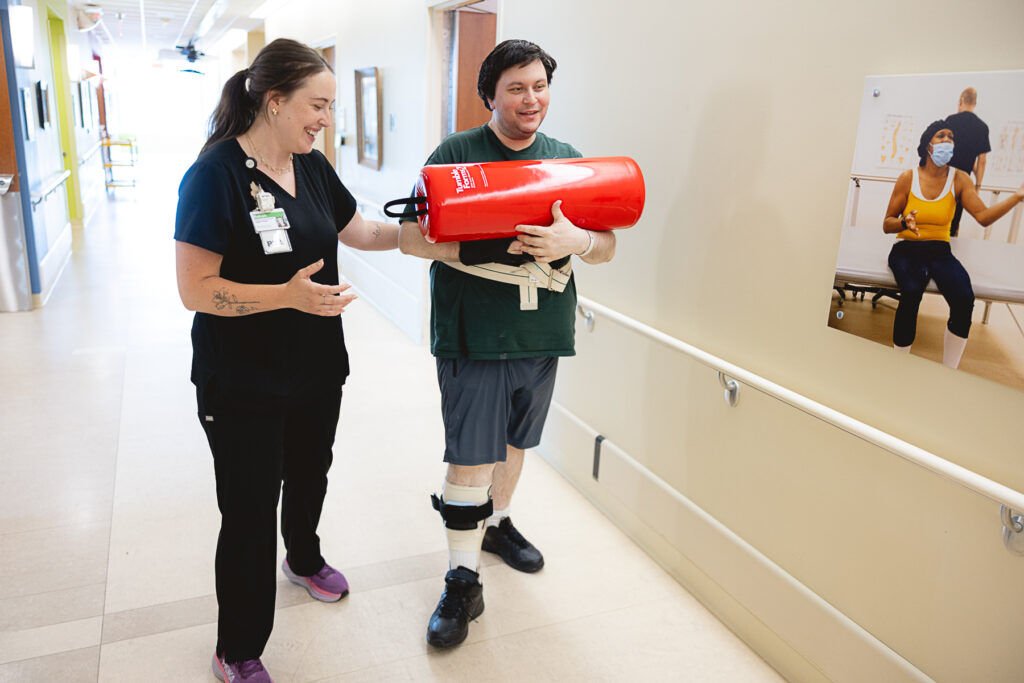
Cosmos in the Coffee Grounds
Everyone who knows Bruce is quick to point out his mastery of speech and language. But during his five-week stay at Mary Free Bed, Bruce discovered a new avenue for creative expression: painting.
With the help of Mary Free Bed art therapist Libby Smith, Bruce began painting planets using coffee grounds. He also constructed detailed stories to accompany each artwork.
While some patients need prompting to feel comfortable with art therapy, Bruce knew exactly what he wanted to create. For someone who devoted his life’s work to the intricacies of speech and language, diving into visual art opened an entirely new world.
Art can offer a detour when language falls short. By using creativity as a tool, patients can build “a new highway around” the damaged areas—something every Michigander stuck in construction traffic can relate to.
Finding the Bright Spots
Art therapy also provided Bruce the space to work through some of the complicated emotions surrounding his stroke as he worked through rehabilitation.
All of Bruce’s therapists cited his openness and curiosity as driving forces for his recovery process. As a man of many words, his advice to other patients is simple: “You gotta live it. You gotta enter back into the real world.” He continued, “That’s what Mary Free Bed is for.”
About Stroke Rehabilitation at Mary Free Bed
Mary Free Bed Rehabilitation Hospital offers one of the top stroke recovery programs in Michigan, helping patients from across the state—and the country—write powerful comeback stories. As a destination for inpatient rehabilitation, our comprehensive stroke program provides intensive therapy, advanced technology, and expert care from a specialized team focused on helping each patient regain independence. With outcomes that exceed national benchmarks and satisfaction rates in the 94th percentile, Mary Free Bed delivers a proven path forward for survivors and their families. Stories like Bruce’s remind us that it’s not how far you travel for stroke recovery; it’s how far you’ve come.
Learn more about stroke recovery at Mary Free Bed.
